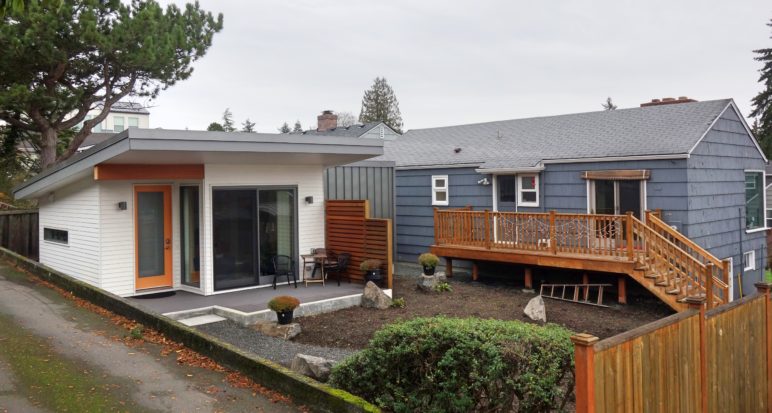Much Ado about ADU Financing

In a new joint paper from the UC Berkeley Terner Center for Housing Innovation and USC Lusk Center for Real Estate, Green et al (2022) assess the challenges and opportunities of financing for Accessory Dwelling Units (ADUs), also known as “Granny Flats.”
Key takeaways:
- Home equity has been the primary source of capital for building new ADUs in California, which means that wealthier homeowners who have built more equity can more easily borrow money to build new homes in their own backyards.
- ADU financing has serious implications for racial justice: “While ADUs have potential to be a tool to bridge the racial wealth gap and add financial stability for lower- and moderate- income homeowners, to date, comparatively affluent and, in many regions, whiter, homeowners have disproportionately built ADUs.”
- Supporting other forms of financing, such as renovation loans or shared appreciation models, can help make access to credit for ADU construction more equitable.
Recent state reforms permitting more construction of Accessory Dwelling Units (ADUs) have been essential for increasing housing supply amid California’s critical shortage. But as Green et al (2022) observe, the increase in available homes and rental income have accrued mostly to whiter, wealthier areas. This isn’t great news for a relatively inexpensive form of housing development that has great potential to help individual cash-poor homeowners build generational wealth.
Fortunately, some basic policy reforms could more equitably distribute the much-needed increase in housing supply.
The authors first note that, overall, more ADUs offer major contributions to housing affordability: “ADUs often are leased at rents that are affordable to households earning below the area median income; for example, in the high property-value areas of Alameda, Marin, and San Mateo counties, between 29-67% of ADUs are affordable to a family of two making 80% of the area median income.”
The Biden Administration recently released a strategic plan to increase housing supply that included financing assistance for ADUs, which the White House projects could account for over 1 million new homes. But importantly, it’s a win-win for renters and property owners as well – by providing supplemental income to homeowners, it can increase their financial stability and provide housing security amid economic downturns. In effect, ADU development could help prevent another devastating widening of the racial wealth gap through lost home equity in a downturn like the US experienced after the 2008 Great Recession.
In a UC Berkeley survey of 800 California homeowners who had recently built ADUs, nearly two-thirds of respondents said they financed the new construction with liquid assets, such as cash savings; 43 percent borrowed against the value of their home through debt instruments like a Home Equity Line Of Credit (HELOC) or cash-out refinancing. A small share of those borrowers, just 6.3 percent, borrowed via renovation loans, though these types of loans can provide more money by amortizing the value of the property that is expected after construction is finished.
Expanding access to renovation loans would be enormously beneficial to lower-income communities – as the authors note, these loans are “theoretically well-suited to help homeowners without significant equity, but remain relatively unused.”
Government agencies including Fannie Mae and the Federal Housing Administration have the potential to support more renovation loans, but evidence has shown that these agencies typically undervalue potential ADUs in their appraisals, and overly restrict how ADUs can be built with government assistance. Additionally, renovation loans require more complex coordination between lenders, owners, contractors, and government agencies, which requires more time and staffing and, ultimately, raises borrowing costs.
Part of the problem is that construction work has to be completed and inspected before the loan can be fully disbursed, which makes contractors reluctant to take on projects in which they bear the risk of unexpected cashflow hiccups. The authors recommend that housing finance agencies “explore ways to release loan funds as the project requires it, for example, by allowing contractors to bypass the draw process if the contractor needs to pay for materials or subcontractors.”
In addition to public support for renovation loans, the study recommends further research on bridge financing, shared mortgage appreciation, personal property loans, and ground leases.
Photo “ADU in Seattle’s Wedgewood neighborhood” by Sightline Institute: Missing Middle Homes Photo Library, CC BY 2.0